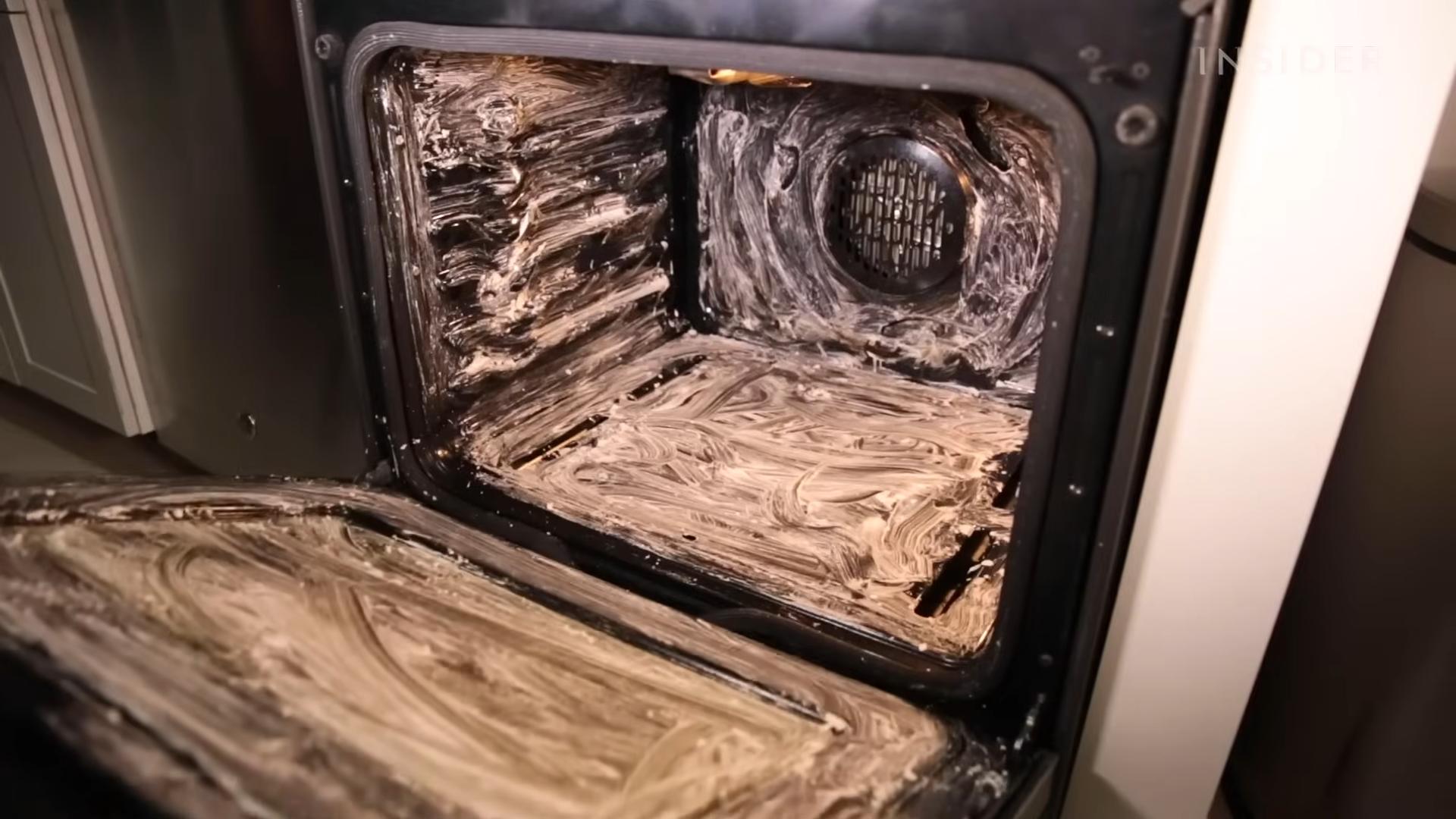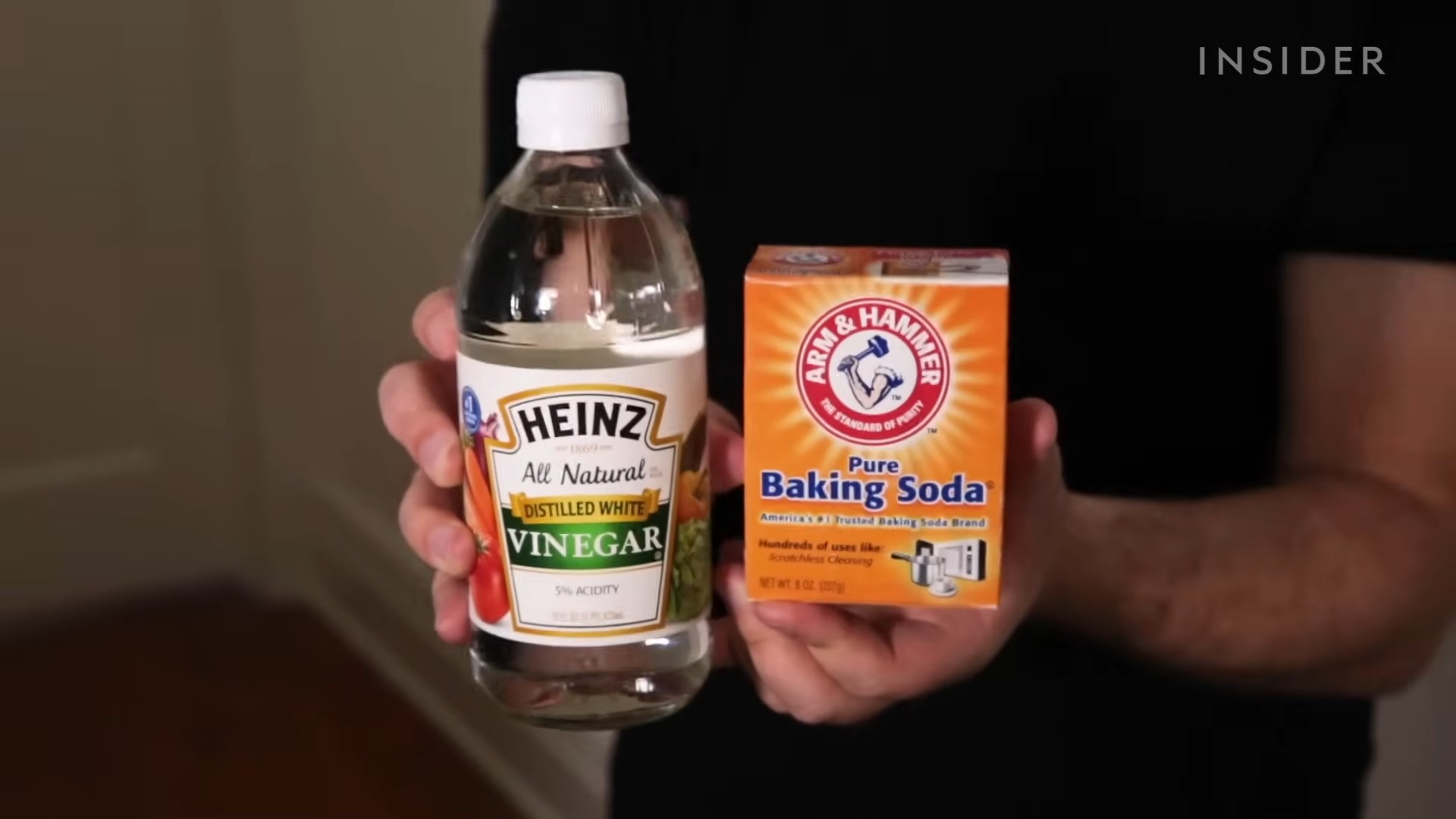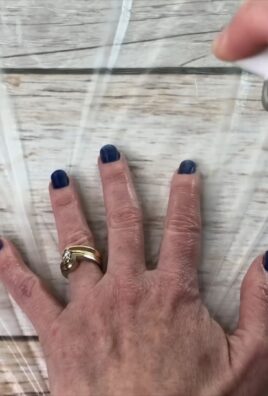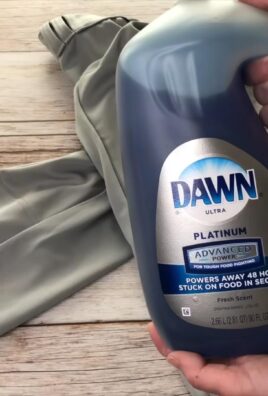Oven Cleaning Vinegar Baking Soda: Sounds like a science experiment, right? Well, in a way, it is! But trust me, it’s a delicious experiment that ends with a sparkling clean oven and the satisfaction of knowing you conquered that baked-on grime without harsh chemicals. For generations, resourceful homemakers have relied on the power of simple ingredients like vinegar and baking soda to tackle tough cleaning tasks. Think about it – before the age of specialized cleaning products, these were the go-to solutions, passed down through families and proven effective time and time again.
Let’s be honest, nobody *loves* cleaning the oven. It’s a chore we all dread, often putting it off until it’s absolutely unavoidable. But a dirty oven not only looks bad, it can also affect the taste of your food and even pose a fire hazard! That’s where this DIY trick comes in. I’m going to show you how to harness the power of oven cleaning vinegar baking soda to effortlessly lift away grease and baked-on food, leaving your oven looking (and smelling!) brand new. This method is not only incredibly effective, but it’s also eco-friendly and budget-friendly. So, ditch the harsh chemicals and let’s get started on this simple, yet powerful, cleaning adventure!

DIY Oven Cleaning with Vinegar and Baking Soda: A Sparkling Clean Oven Without Harsh Chemicals
Okay, let’s face it, cleaning the oven is probably on everyone’s list of least favorite chores. But a clean oven is essential for delicious, evenly cooked food and, let’s be honest, a more pleasant cooking experience. Forget those harsh chemical cleaners with their overpowering fumes! I’m going to show you how to get your oven sparkling clean using just two simple ingredients: vinegar and baking soda. This method is not only effective but also eco-friendly and safe for your family and pets.
What You’ll Need
Before we dive in, let’s gather our supplies. This is a pretty straightforward process, so the list is short and sweet:
* Baking Soda
* White Vinegar
* Water
* Spray Bottle
* Spatula or Scraper (plastic or silicone is best to avoid scratching)
* Sponge or Scrub Brush
* Rubber Gloves (optional, but recommended)
* Paper Towels or a Clean Cloth
* Old Towels or Newspaper (to protect your floor)
Prepping Your Oven for Cleaning
Before we get to the fun part (well, maybe not *fun*, but definitely satisfying!), we need to prep the oven.
1. Remove Oven Racks and Accessories: Take out all the oven racks, baking sheets, pizza stones, or anything else you have stored in your oven. We’ll clean these separately later.
2. Protect Your Floor: Lay down old towels or newspaper around the base of your oven. This will catch any drips and spills, making cleanup a breeze. Trust me, you’ll thank me later!
3. Give it a Quick Wipe Down: Use a damp cloth or paper towel to wipe up any loose crumbs or debris from the bottom of the oven. This will help the baking soda paste adhere better.
Making and Applying the Baking Soda Paste
This is where the magic happens! We’re going to create a powerful, yet gentle, cleaning paste.
1. Mix the Paste: In a bowl, combine 1/2 cup of baking soda with a few tablespoons of water. Add water gradually until you form a thick, spreadable paste. The consistency should be similar to frosting. You don’t want it too runny!
2. Coat the Oven: Using your hands (with gloves, if you prefer) or a spatula, spread the baking soda paste all over the interior surfaces of your oven. This includes the walls, floor, door (inside), and even the heating elements (be careful not to damage them). Avoid the heating elements if they are exposed and fragile.
3. Focus on Stubborn Spots: Pay extra attention to areas with baked-on grease or food splatters. Apply a thicker layer of paste to these spots.
4. Let it Sit: Now comes the waiting game. Leave the baking soda paste on for at least 12 hours, or even better, overnight. This allows the baking soda to work its magic, loosening the grime and making it easier to remove.
Cleaning the Oven Racks
While the baking soda paste is working its wonders inside the oven, let’s tackle those grimy oven racks.
1. Soak the Racks: Fill your bathtub (or a large utility sink) with hot water and add about 1/2 cup of dish soap and 1/2 cup of baking soda.
2. Submerge the Racks: Place the oven racks in the water, making sure they are completely submerged. If they don’t fit entirely, you can clean them in sections, rotating them as needed.
3. Let Them Soak: Let the racks soak for at least 2-3 hours, or even overnight for heavily soiled racks. The longer they soak, the easier it will be to remove the grime.
4. Scrub and Rinse: After soaking, use a scrub brush or sponge to scrub away any remaining grease and food particles. You might need to use a little elbow grease for stubborn spots.
5. Rinse Thoroughly: Rinse the racks thoroughly with clean water to remove any soap residue.
6. Dry Completely: Dry the racks completely with a clean towel before placing them back in the oven.
Removing the Baking Soda Paste and Vinegar Rinse
Okay, the waiting is over! It’s time to remove the baking soda paste and give your oven a final cleaning.
1. Wipe Away the Paste: Use a damp sponge or cloth to wipe away as much of the baking soda paste as possible. You might need to rinse the sponge frequently as you go. A plastic spatula can be helpful for scraping off thicker areas of paste.
2. Vinegar Power: Pour some white vinegar into a spray bottle. Spray the entire interior of the oven with vinegar. The vinegar will react with any remaining baking soda, creating a fizzing action that helps to loosen any remaining grime.
3. Final Wipe Down: Use a clean sponge or cloth to wipe down the oven one last time, removing any remaining vinegar and baking soda residue.
4. Dry the Oven: Use a clean, dry cloth or paper towels to dry the interior of the oven completely. This will prevent any water spots from forming.
Final Touches and Tips
We’re almost there! Just a few final touches to make your oven shine.
1. Replace the Racks: Carefully place the cleaned and dried oven racks back into the oven.
2. Run a Low-Temperature Cycle (Optional): To ensure the oven is completely dry and to eliminate any lingering odors, you can run the oven on a low temperature (around 200°F) for about 15-20 minutes.
3. Ventilate the Kitchen: Open a window or turn on your kitchen fan to ventilate the area while the oven is drying.
4. Preventative Measures: To keep your oven cleaner for longer, consider using oven liners or baking sheets to catch spills and splatters. Wipe up spills as soon as they happen to prevent them from baking onto the oven surfaces.
Troubleshooting Tips
Sometimes, even with the best methods, you might encounter a few challenges. Here are some troubleshooting tips to help you out:
* Stubborn Grease Stains: If you have particularly stubborn grease stains, try making a thicker baking soda paste and leaving it on for a longer period of time. You can also try using a paste made from baking soda and dish soap.
* Burnt-On Food: For burnt-on food, try using a plastic scraper to gently scrape away the debris before applying the baking soda paste. Be careful not to scratch the oven surface.
* Lingering Odors: If you notice any lingering odors after cleaning, try placing a bowl of vinegar or baking soda in the oven overnight to absorb the smells. You can also try boiling a pot of water with lemon slices in the oven for about 30 minutes.
* Hard-to-Reach Areas: Use an old toothbrush or cotton swabs to clean hard-to-reach areas, such as around the door hinges or heating elements.
Why This Method Works
You might be wondering why this simple method is so effective. Here’s the science behind it:
* Baking Soda: Baking soda is a mild alkali that helps to dissolve grease and dirt. It also has abrasive properties that help to scrub away stubborn stains.
* Vinegar: Vinegar is a mild acid that helps to break down mineral deposits and cut through grease. When combined with baking soda, it creates a fizzing action that helps to loosen grime.
This combination of baking soda and vinegar is a powerful, yet gentle, cleaning solution that is safe for your family, your pets, and the environment. Plus, it’s a lot cheaper than those harsh chemical cleaners!
Maintaining a Clean Oven
Now that you’ve got your oven sparkling clean, let’s talk about how to keep it that way!
* Wipe Up Spills Immediately: The best way to prevent a messy oven is to wipe up spills as soon as they happen. This will prevent them from baking onto the oven surfaces and becoming difficult to remove.
* Use Oven Liners or Baking Sheets: Consider using oven liners or baking sheets to catch spills and splatters. This will protect the bottom of your oven and make cleanup much easier.
* Regular Cleaning: Aim to clean your oven at least once every few months, or more frequently if you use it often. Regular cleaning will prevent grime from building up and make the cleaning process much easier.
* Self-Cleaning Cycle (Use Sparingly): If your oven has a self-cleaning cycle, use it sparingly. Self-cleaning cycles can generate high temperatures and strong odors, and they can also be hard on your oven.
So there you have it! A simple, effective, and eco-friendly way to clean your oven using just vinegar and baking soda. I hope this guide has been helpful and that you’re now on your way to a sparkling clean oven. Happy baking!

Conclusion
So, there you have it! This simple yet incredibly effective DIY oven cleaning trick using vinegar and baking soda is a game-changer for anyone who dreads tackling that baked-on grime. Forget harsh chemicals, overpowering fumes, and hours of scrubbing. This method harnesses the natural cleaning power of two readily available ingredients to leave your oven sparkling clean and ready for your next culinary adventure.
Why is this a must-try? Because it’s not just about cleaning; it’s about reclaiming your time and peace of mind. Imagine spending just a few minutes prepping the oven, letting the magic happen overnight, and then effortlessly wiping away the mess the next day. No more aching arms, no more holding your breath to avoid toxic fumes, just a clean oven and a satisfied feeling of accomplishment. Plus, it’s incredibly budget-friendly! You’re likely to already have vinegar and baking soda in your pantry, making this a cost-effective alternative to expensive commercial oven cleaners.
But the benefits don’t stop there. This method is also environmentally friendly. By avoiding harsh chemicals, you’re reducing your impact on the planet and creating a healthier environment for your family. It’s a win-win situation!
Looking for variations? Consider adding a few drops of your favorite essential oil, like lemon or lavender, to the vinegar solution for a fresh, clean scent. If you have particularly stubborn stains, you can create a thicker paste of baking soda and water and apply it directly to the affected areas. For ovens with self-cleaning functions, you can use this method as a pre-cleaner to loosen grime before running the self-cleaning cycle, making it even more effective. Remember to always consult your oven’s manual before attempting any cleaning method.
This DIY oven cleaning method is truly a must-try for anyone looking for a safe, effective, and affordable way to keep their oven sparkling clean.
We’re confident that once you try this method, you’ll be amazed by the results. It’s a simple, effective, and eco-friendly way to tackle a chore that many people dread. So, ditch the harsh chemicals and embrace the power of vinegar and baking soda!
Now, we want to hear from you! Give this DIY oven cleaning trick a try and share your experience in the comments below. Did it work for you? Did you try any variations? What tips and tricks did you discover? We’re eager to learn from your experiences and build a community of clean oven enthusiasts! Let’s make oven cleaning a little less daunting, one baking soda and vinegar mixture at a time. We are sure that you will find this method of oven cleaning with vinegar and baking soda to be a great alternative to commercial cleaners.
Frequently Asked Questions (FAQ)
Q: Is this method safe for all types of ovens?
A: Generally, yes, this method is safe for most types of ovens, including gas and electric ovens. However, it’s always a good idea to consult your oven’s manual before attempting any cleaning method. Pay particular attention to any warnings or recommendations regarding cleaning products or techniques. Avoid getting the baking soda paste on heating elements or any electrical components. If you have a self-cleaning oven, you can use this method as a pre-cleaner to loosen grime before running the self-cleaning cycle, but be sure to remove any excess baking soda paste before activating the self-cleaning function.
Q: How long should I leave the baking soda paste in the oven?
A: For best results, leave the baking soda paste in the oven overnight, or for at least 12 hours. This allows the baking soda to effectively loosen the baked-on grime and grease. If you’re short on time, you can try leaving it for a shorter period, such as 4-6 hours, but the results may not be as dramatic. The longer the paste sits, the easier it will be to wipe away the mess.
Q: What if the grime is really stubborn and doesn’t come off easily?
A: If you encounter stubborn grime, there are a few things you can try. First, make sure you’ve applied a thick enough layer of baking soda paste to the affected areas. Second, try scrubbing the area with a non-abrasive sponge or brush. You can also try creating a stronger cleaning solution by adding a bit of dish soap to the vinegar and water mixture. For extremely stubborn stains, you can try using a plastic scraper to gently lift the grime. Avoid using metal scrapers, as they can scratch the oven’s surface.
Q: Can I use this method to clean the oven door glass?
A: Yes, this method is generally safe to use on the oven door glass. However, be careful not to get the baking soda paste on the rubber seal around the door, as it can dry it out. Apply the paste to the glass, let it sit for a few hours, and then wipe it clean with a damp cloth. For particularly stubborn stains on the glass, you can try using a glass cleaner after wiping away the baking soda paste.
Q: What if I don’t have vinegar? Can I use something else?
A: While vinegar is the preferred ingredient for this method due to its acidity and cleaning properties, you can try using lemon juice as a substitute. Lemon juice also has acidic properties that can help to loosen grime. However, vinegar is generally more effective and readily available.
Q: Will this method remove burnt smells from my oven?
A: While this method is primarily designed to clean the oven, it can also help to remove burnt smells. The baking soda helps to absorb odors, and the vinegar helps to neutralize them. After cleaning the oven, you can also try placing a bowl of vinegar or baking soda inside the oven overnight to further absorb any lingering odors.
Q: How often should I clean my oven using this method?
A: The frequency of cleaning depends on how often you use your oven and how much it gets soiled. As a general guideline, you should aim to clean your oven every 3-6 months. However, if you notice a lot of spills or splatters, or if your oven starts to smell burnt, you may need to clean it more frequently. Regular cleaning will prevent grime from building up and make the cleaning process easier in the long run.
Q: Is it necessary to wear gloves when cleaning the oven with vinegar and baking soda?
A: While vinegar and baking soda are generally considered safe, it’s always a good idea to wear gloves when cleaning to protect your skin from irritation. Prolonged exposure to vinegar or baking soda can dry out your skin.
Q: How do I prevent my oven from getting so dirty in the first place?
A: There are several things you can do to prevent your oven from getting excessively dirty. Use oven liners or baking sheets to catch spills and splatters. Clean up spills immediately after they occur. Avoid overfilling dishes, as this can lead to boil-overs. And consider using a splatter screen when cooking foods that tend to splatter. Regular maintenance and preventative measures can significantly reduce the amount of cleaning required.
Q: What is the best way to dispose of the used baking soda paste?
A: The used baking soda paste can be safely disposed of down the drain. Simply rinse it down with plenty of water. Baking soda is a natural and biodegradable substance, so it won’t harm the environment.





Leave a Comment